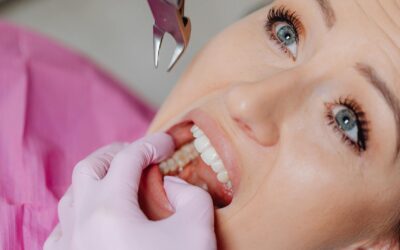Dental fillings are a routine and often necessary solution for cavities, but many patients experience tooth sensitivity after filling—a concern that can feel alarming, especially if it lingers. This common post-treatment sensation can range from mild discomfort to sharper sensitivity, particularly when exposed to cold drinks or air. Understanding why this happens, how long it typically lasts, and what you can do about it can help ease your worries and promote better oral health.
Why Does Tooth Sensitivity Occur After a Filling?
Tooth sensitivity after a filling can occur for several reasons, many of which are entirely normal and temporary. Here are the most common causes:
1. Nerve Irritation
- When a cavity is deep, the dental work can come close to the tooth’s pulp (the nerve-rich center), leading to temporary inflammation.
- This is one of the leading reasons a tooth is sensitive to cold after a filling.
2. High Filling or Bite Misalignment
- If the filling is too high or uneven, it may cause discomfort when chewing.
- The constant pressure on a high spot can irritate the tooth and surrounding nerves.
3. Pulpitis (Inflammation of the Pulp)
- In some cases, a filling may trigger pulpitis, especially if decay was close to the nerve.
- It can be reversible (mild and temporary) or irreversible (requiring further treatment like a root canal).
4. Type of Filling Material
- Different materials (composite, amalgam, etc.) have different thermal properties.
- Composite fillings may cause more sensitivity because they are bonded chemically, which can affect the tooth differently than traditional silver fillings.
5. Tooth Cracks or Microleakage
- If the filling doesn’t perfectly seal the cavity, microscopic gaps may allow bacteria or fluids to enter, causing sensitivity.
Note: According to the American Dental Association (ADA), post-filling sensitivity is common and generally resolves within a few days to weeks unless complications are present.
6. Multiple Fillings in One Visit
- If you received several fillings at once, the cumulative trauma to your teeth may result in increased sensitivity across multiple areas.
7. Pre-Existing Tooth Sensitivity
- If your teeth were already sensitive before the procedure, it’s possible the filling will temporarily exacerbate that discomfort.
How Long Does Tooth Sensitivity Last After a Filling?
The duration can vary depending on the severity of the decay, type of filling, and your individual healing response. Here’s a general timeline:
- Mild Sensitivity: Usually lasts a few days to a week.
- Moderate Sensitivity: Can persist up to 2–4 weeks.
- Tooth Sensitivity After Filling 6 Weeks Later: If you still experience discomfort beyond six weeks, it may signal an underlying issue that requires a dentist’s attention.
Note: Still feeling pain after a month? Don’t ignore it—return to your dentist to rule out complications like pulpitis or an improper bite.
Contributing Factors That May Extend Recovery Time:
- The depth and location of the cavity
- Your personal pain tolerance and oral hygiene habits
- The filling material used
- The skill and technique of the dentist
Is Tooth Sensitivity Normal After a Filling?
Yes, mild to moderate sensitivity—especially to temperature changes—is normal in the short term. Common symptoms include:
- Sharp pain when consuming hot or cold foods
- Sensitivity when brushing near the filled tooth
- Discomfort when biting or chewing on that side
However, if you notice increasing pain, swelling, or sensitivity that worsens over time, it may not be normal. Be sure to monitor any symptoms and communicate changes with your dentist.
Note: Composite resin fillings tend to cause more short-term sensitivity than amalgam fillings but are more aesthetically pleasing.
Tips to Reduce Sensitivity After a Filling
There are several ways to manage and soothe sensitivity on a tooth after filling:
1. Use Desensitizing Toothpaste
- Brands like Sensodyne or Colgate Sensitive Pro-Relief help block pain signals from the tooth surface.
- Brush gently twice a day and avoid whitening toothpaste, which can exacerbate sensitivity.
2. Avoid Extreme Temperatures
- Steer clear of hot coffee, ice cream, or cold beverages until sensitivity subsides.
- Lukewarm meals and drinks are safer choices.
3. Chew on the Opposite Side
- Give your filled tooth time to rest and heal by using the other side of your mouth for chewing.
4. Practice Gentle Brushing
- Use a soft-bristled toothbrush and non-abrasive toothpaste to avoid irritating the area.
5. Avoid Acidic Foods
- Citrus, soda, and vinegar can worsen sensitivity by weakening enamel further.
6. Try a Fluoride Rinse
- Over-the-counter fluoride mouthwashes help strengthen enamel and reduce sensitivity.
7. Use a Mouthguard (if grinding is an issue)
- Nighttime grinding can worsen post-filling pain and wear down your restoration.
- Consult your dentist about a custom night guard if you suspect bruxism.
8. Follow Up With Your Dentist
- If you still have tooth sensitivity after filling 2 weeks post-procedure, let your dentist evaluate your bite and the integrity of the filling.
Pro Tip: Sensitivity may feel worse with composite fillings but usually improves faster than with metal fillings.
When to Worry: Signs You Should See a Dentist
Sometimes, tooth sensitivity after a filling is a symptom of something more serious. Contact your dentist if you experience:
- Pain that worsens instead of improving
- Tooth sensitivity that lasts longer than 4–6 weeks
- Severe pain when biting or chewing
- Visible cracks or signs of infection (swelling, pus, etc.)
- Persistent throbbing pain or temperature sensitivity that lingers after the stimulus is gone
Prompt attention to these issues can prevent complications such as root canal infections or the need for replacement fillings.
What to Expect at the Dental Office
If your sensitivity persists and you return to the dentist, they may perform:
- A bite test to check for high spots on the filling
- X-rays to examine the pulp and check for infection or decay beneath the filling
- Cold tests to measure the nerve’s response
In some cases, they may adjust the filling, replace it, or recommend a root canal if irreversible pulpitis is diagnosed.
Prevention Tips for the Future
Preventing post-filling sensitivity starts with good dental practices before and after treatment:
- Maintain regular brushing and flossing to avoid deep cavities
- Visit your dentist for cleanings and check-ups every 6 months
- Avoid biting on hard objects like ice or pens
- Use a fluoride toothpaste to strengthen enamel
- Address bruxism or nighttime grinding early
Frequently Asked Questions
How long will my tooth be sensitive after a filling?
It’s common to experience mild to moderate sensitivity for a few days to up to 2–4 weeks after a filling. If the sensitivity lasts longer—especially to cold or pressure—or worsens after 6 weeks, it’s best to consult your dentist. Prolonged sensitivity may indicate issues like bite misalignment or nerve irritation.
Is it normal to have cold sensitivity after a cavity filling?
Yes, many patients report that their tooth is sensitive to cold after a filling, especially when using composite materials. This occurs because the nerve inside the tooth may still be healing or reacting to the temperature changes. It typically subsides within a few weeks.
Why does my filled tooth hurt when I bite down?
Pain while biting can happen if the filling is too high or not properly aligned with your bite. This places uneven pressure on the tooth, irritating the nerves or ligaments. A simple adjustment by your dentist can usually fix this issue.
Should I be concerned if I still have tooth sensitivity 2 weeks after a filling?
Tooth sensitivity after filling 2 weeks later is still considered normal if it’s improving. However, if the pain is intense, doesn’t fade with time, or worsens with cold/hot foods, it could be a sign of pulpitis, a high filling, or an underlying issue that needs professional attention.
What helps relieve sensitivity on a tooth after filling?
To relieve sensitivity on a tooth after filling, try desensitizing toothpaste, avoid very hot or cold foods, and use a fluoride rinse. If grinding is a factor, wear a mouthguard at night. Most importantly, follow your dentist’s post-care recommendations.
Final Thoughts
Experiencing tooth sensitivity after filling is often a normal part of the healing process. It’s usually short-lived and manageable with simple at-home care. However, ongoing sensitivity—especially if your tooth is still sensitive to cold after cavity filled weeks ago—shouldn’t be ignored. Prompt communication with your dentist ensures your filling functions as intended and your tooth remains healthy long-term.
Information in this article is based on data and clinical advice from trusted sources, including the Mayo Clinic, Cleveland Clinic, and the American Dental Association.
Remember: Most post-filling sensitivity resolves on its own. Patience and proper oral care go a long way in promoting recovery and comfort.
By staying informed and proactive, you can manage sensitivity effectively and enjoy the benefits of your dental filling without ongoing discomfort.
Recommended Read: 50 Must-Know Tooth Health FAQs Answered by Experts
Disclaimer: The content provided in this article is for educational and informational purposes only. It does not substitute professional medical advice, diagnosis, or treatment. For guidance specific to your dental condition or recovery, please consult your dentist, oral surgeon, or licensed healthcare provider.










0 Comments